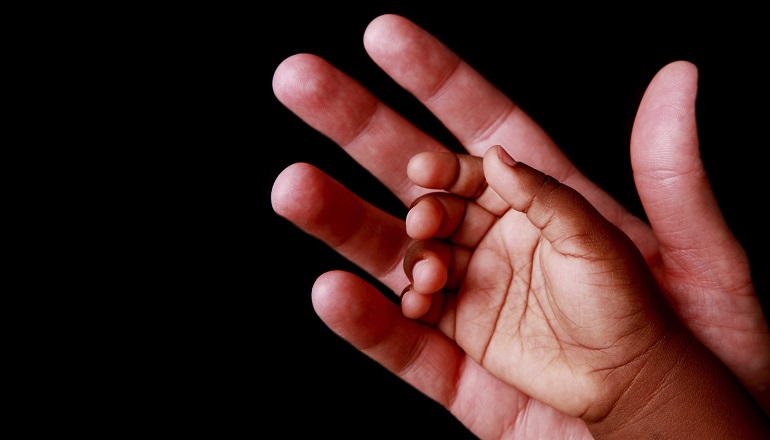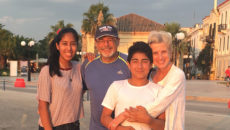About a decade ago it was popular to say, “Love sees no color. I really don’t see that my kids are different.” I’m hoping we’ve moved away from that, because it’s just not true. We all notice differences, and, if we say we can’t, we’re denying something. That’s a really big part of white privilege—not recognizing that you have white privilege. Not only does this diminish the power and energy of diversity, this denial sends a message that being different is bad or shameful or something that needs to be ignored. Kids might think that even the act of noticing their unique hair or distinctive skin color means there’s something wrong with them.
Differences at Home
It’s not enough to stop sending that message of color blindness, we must let kids know that it’s OK to describe what they’re seeing and to talk about it. It’s best to begin this at a very young age, when kids haven’t learned social inhibitions and literally say just about anything.
My family is multiracial and, when our son was three, we all sat on the floor together and asked him to describe how we looked. He said, “OK, Mommy has black hair and brown skin. Ally has brown hair and brown skin. Luke has black hair and brown skin. Daddy has yellow hair and white skin.” There was a pause, and then he said, “Poor Daddy.” We affirmed the differences he noticed, then explained how physical features are related to ethnic origins. We explained, “Mommy has black hair and brown skin because she’s Korean. Daddy’s Swedish, and that’s why he has blond hair and white skin.” You can do this with a map and tell your kids what people from their birth country and different parts of the world look like, how they dress, what language they speak, and so on.
Differences Within Society
Openness in talking about racial differences is a crucial first step. Parents must also shake off discomfort in talking about racism, and society’s perception of their children. Begin by examining your extended families, because most of a young child’s first connections will be with cousins, grandparents, aunts and uncles. Put a critical eye on those relatives and ask yourself, “What are the jokes and stories they tell? Are they racially or culturally uncomfortable?” If kids hear something that could be offensive, parents either need to intervene in the moment, or follow up with their child afterwards to talk about what happened.
Then observe your community, noticing race at the grocery store, riding the bus, at the park, and asking, “What does our world look like? What does our family look like? Will my child see people who look similar to him? How does the world see my child?”
As parents, it’s our job to understand the world in which we live and prepare our kids for the attitudes they’ll encounter; it’s part of our parental responsibility to “get it.” Moving on from a “love sees no color” attitude may even come down to safety and survival. One of my good friends who has biological, Caucasian children and also adopted two African-American children was telling me, “You’d better believe we raised our black sons differently, teaching them some very different things than we taught our white sons, because the worlds they live in are very different. Case in point—how they should interact with a police officer.”
I’ve had many families say to me, “You know, after adopting, our group of friends really changed. We’ve gravitated toward those who supported our transracial adoption decision and who really enrich our lives, and spend less time with those who seem to narrow our world view.” I believe this is a healthy progression, that transracial adoption shouldn’t be about making your child “like” the rest of the family. Let her know that she’s part of your family, that she belongs, that families are about attachment, choices, and history together, not about blood, and that you recognize and value the diversity she brings to yours.



